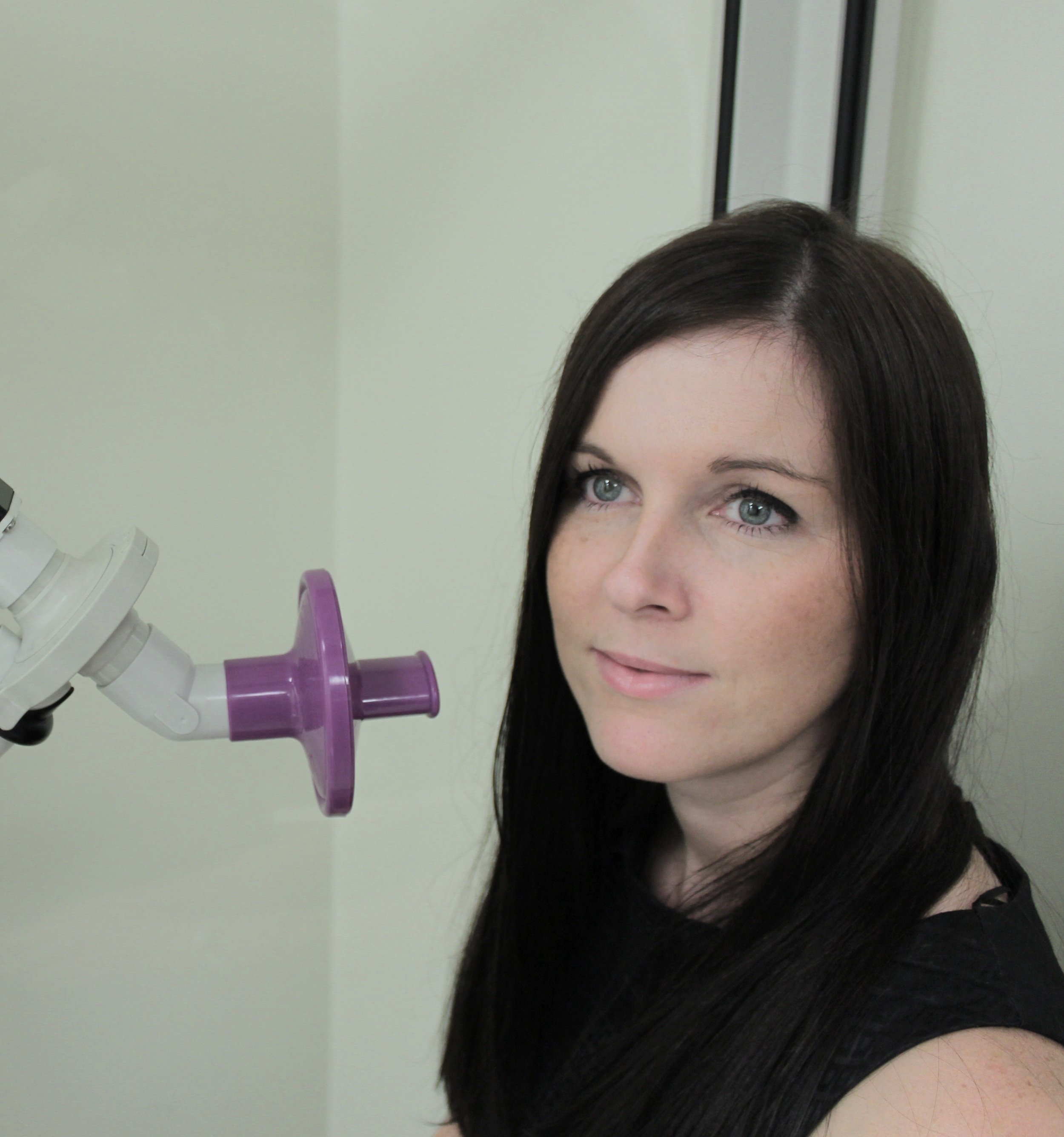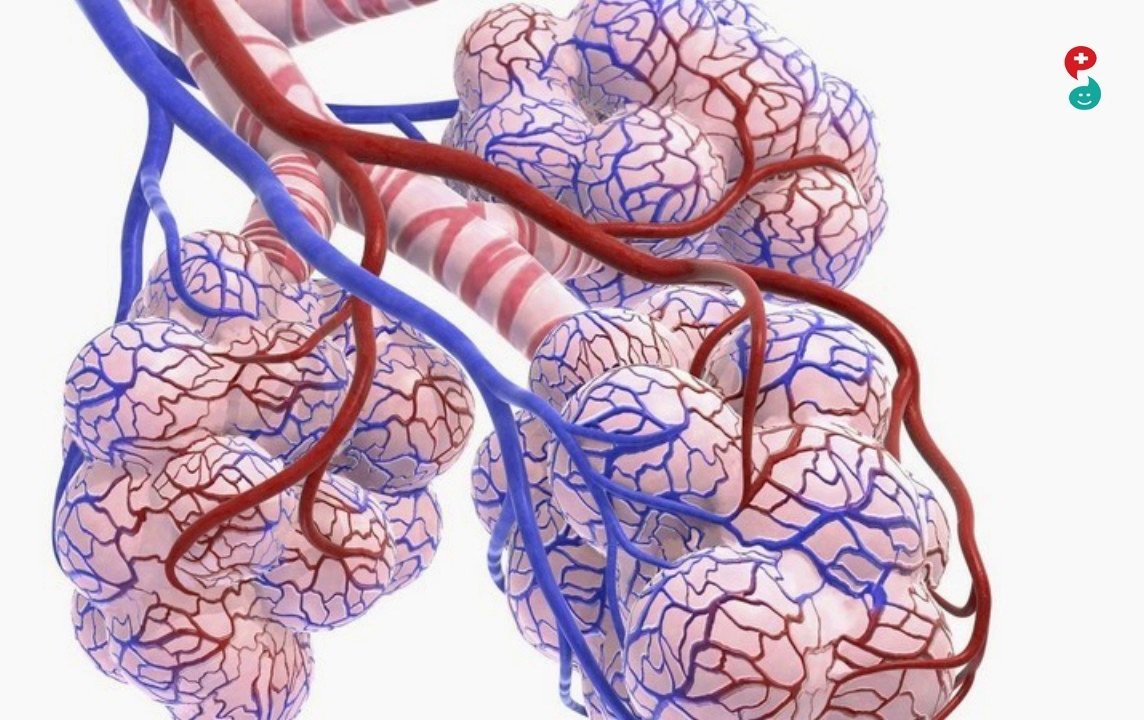Lung Function Testing
Flow Volume Loops (Spirometry)
Spirometry is a common pulmonary function test that measures the amount of air a patient can inhale and exhale, as well as the speed at which they can do so. Specifically, spirometry measures two key parameters:
Forced Expiratory Volume in 1 second (FEV1) - the amount of air that can be forcefully exhaled in one second.
Forced Vital Capacity (FVC) - the total amount of air that can be exhaled forcefully after taking a deep breath.
Spirometry can provide important information about lung function, particularly in the diagnosis and management of obstructive lung diseases such as asthma and chronic obstructive pulmonary disease (COPD). However, it does not provide information about gas transfer across the lung tissue or lung volumes, which can be important in the diagnosis and management of other lung conditions.
Adding DLCO and lung volume testing to spirometry can provide a more complete picture of a patient's lung function. DLCO, or diffusing capacity of the lung for carbon monoxide, measures how well the lungs are able to transfer gases from the air into the bloodstream. This test can be particularly useful in the diagnosis and management of interstitial lung disease, pulmonary hypertension, and emphysema.
Lung volume testing, such as body plethysmography, measures the amount of air in the lungs at different stages of breathing. This type of testing can help in the diagnosis and management of restrictive lung diseases, neuromuscular disorders, and other conditions that affect lung volumes.
By adding DLCO and lung volume testing to spirometry, a GP can obtain a more complete picture of a patient's lung function. This can help in the diagnosis and management of a wide range of lung conditions, particularly those that may not be fully captured by spirometry alone. Additionally, having a more complete understanding of a patient's lung function can help guide treatment decisions and monitor the response to treatment over time.
Full Lung Function
BLUK BILLING FOR ROUTINE LUNG FUNTION TESTING
ERS/ATS technical standard on interpretive strategies for routine lung function tests. Stanojevic S, Kaminsky DA, Miller MR, et al. Eur Respir J 2022; 60: 2101499 [DOI: 10.1183/13993003.01499-2021]. Donload
Diffusion Capacity
DLCO stands for "diffusing capacity of the lung for carbon monoxide". It is a lung function test that measures the ability of the lungs to transfer gases from the air into the bloodstream. Specifically, it measures how well the lungs are able to transfer carbon monoxide (CO) from a gas mixture into the bloodstream.
The DLCO test provides additional information about lung function that cannot be obtained from spirometry alone. While spirometry measures the amount of air that can be forcefully exhaled in one second (FEV1) and the total amount of air exhaled (FVC), it does not provide information about gas transfer across the lung tissue.
DLCO can help in the diagnosis of several lung conditions, including chronic obstructive pulmonary disease (COPD), interstitial lung disease, pulmonary hypertension, and emphysema. It can also help in monitoring the progression of these diseases over time.
DLCO is a safe and non-invasive test that is usually performed in a pulmonary function laboratory. The patient breathes into a machine that measures the concentration of carbon monoxide in the air they inhale and exhale. The results are reported as a percentage of the expected value based on age, gender, and height.
In summary, DLCO is a valuable test that provides important information about lung function beyond what can be obtained from spirometry alone. It can help in the diagnosis and management of several lung conditions, and is a safe and non-invasive test that can be easily performed in a pulmonary function laboratory.
Examination of the Carbon Monoxide Diffusing Capacity (DLCO) in Relation to Its KCO and VA Components https://www.atsjournals.org/doi/pdf/10.1164/rccm.201112-2160CI
What can we learn from pulmonary function testing in heart failure?European Journal of Heart Failure (2017) 19, 1222–1229 doi:10.1002/ejhf.946
Lung Volumes
Lung volumes are a set of measurements that describe the amount of air in the lungs at different stages of breathing. These measurements include:
Total Lung Capacity (TLC) - the total amount of air the lungs can hold when they are completely filled.
Residual Volume (RV) - the amount of air left in the lungs after a complete exhalation.
Inspiratory Reserve Volume (IRV) - the additional air that can be breathed in after a normal inhalation.
Expiratory Reserve Volume (ERV) - the additional air that can be breathed out after a normal exhalation.
Vital Capacity (VC) - the maximum amount of air that can be exhaled after a deep inhalation.
Functional Residual Capacity (FRC) - the amount of air left in the lungs after a normal exhalation.
Body plethysmography is a technique used to measure lung volumes. During this test, the patient sits inside a sealed, transparent chamber called a plethysmograph. They are then asked to breathe through a mouthpiece and nose clip while measurements are taken. The plethysmograph measures the changes in air pressure that occur as the patient breathes, allowing the calculation of lung volumes.
The benefits of requesting lung volume testing in addition to spirometry include:
A more complete assessment of lung function: While spirometry is a valuable test that provides information about airflow obstruction, it does not measure lung volumes. By requesting lung volume testing, a GP can obtain a more complete picture of the patient's lung function.
Improved diagnosis of lung conditions: Lung volume testing can help in the diagnosis of several lung conditions, such as chronic obstructive pulmonary disease (COPD), restrictive lung diseases, and neuromuscular disorders. It can also help to differentiate between obstructive and restrictive lung diseases.
Better management of lung conditions: Measuring lung volumes can help in the management of lung conditions by providing information about the severity and progression of the disease. It can also help to guide treatment decisions and monitor the response to treatment.
In summary, lung volume testing using body plethysmography is a valuable tool that can provide important information about lung function beyond what can be obtained from spirometry alone. It can help in the diagnosis and management of several lung conditions, and is a safe and non-invasive test that can be easily performed in a pulmonary function laboratory.
Standardisation of the measurement of lung volumes.




